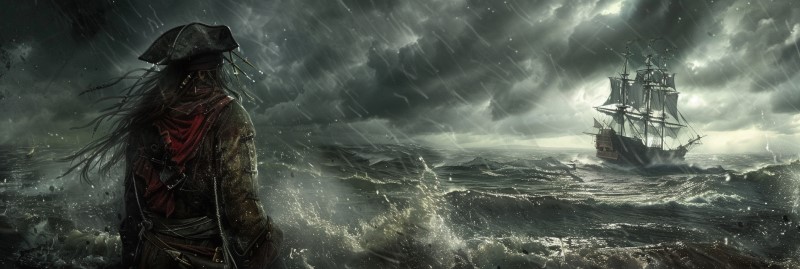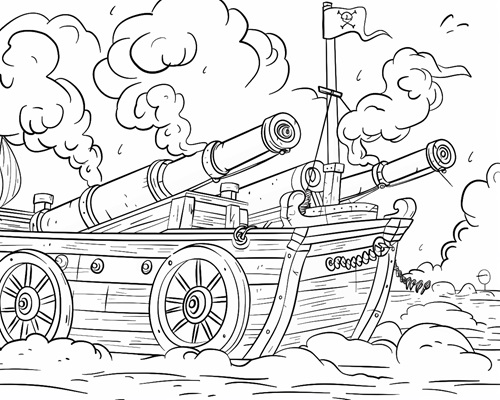Printable Coloring Pages
Sea Shanty Coloring Pages: High Barbary
Lyrics:
There were two lofty ships
From old England came
Blow high, blow low
And so sail we
One was the Prince of Luther
And the other Prince of Wales
Cruisin' down the coast
Of High Barbary
Aloft there, aloft
Our jolly bosun cried
Blow high, blow low
And so sail we
Look ahead, look astern,
Look the weather look a-lee"
Look down the coast
Of High Barbary
There's naught upon the stern,
There's naught upon our lee
Blow high, blow low
And so sail we
But there's a lofty ship to wind'ard
An' she's sailin' fast and free
Down along the coast
Of High Barbary
Oh hail her, oh hail her
Our gallant captain cried
Blow high, blow low
And so sail we
Are you a man-o-war
A privateer, a merchant ship? cried he
Cruisin' down the coast
Of High Barbary
I am not a man-o-war,
A privateer, " said he
Blow high, blow low
And so sail we
But I am a salt sea pirate
A-looking for me fee
Down along the coast
Of High Barbary
For Broadside, for broadside
A long time we lay
Blow high, blow low
And so sail we
Until the Prince of Luther
Shot the pirate's mast away
Down along the coast
Of High Barbary
For quarter, for quarter
The pirates they did cry
Blow high, blow low
And so sail we
But the answer that we gave them
We sunk them in the sea
Cruisin' down the coast
Of High Barbary
Cruisin' down along the coast
Of High Barbary
Cruisin' down along the coast
of High Barbary
History of "Hoist the Colours"

History of "Barrett's Privateers"
"Barrett's Privateers" is a well-known song by the late Canadian folk musician Stan Rogers. Released in 1977 on his album "Fogarty's Cove," the song quickly became one of Rogers' most beloved and iconic works, known for its rousing chorus and vivid storytelling.
Lyrics and Story: The song narrates the ill-fated voyage of Elcid Barrett and his privateering ship, the Antelope, during the American Revolutionary War. It begins in 1778, with the protagonist lamenting his current state as a broken man on a Halifax pier, wishing he was in Sherbrooke. The story recounts how Barrett recruited twenty men to join his crew, setting sail on the decrepit Antelope with hopes of capturing American gold. However, their journey is plagued with hardship, culminating in a disastrous encounter with an American ship that leaves the Antelope destroyed and the crew in ruins.
Cultural Significance: "Barrett's Privateers" is celebrated for its historical narrative and maritime authenticity, capturing the harsh realities of privateering. Its vivid imagery and rousing chorus ("God damn them all") have made it a staple in Canadian folk music and maritime traditions. The song is often sung in pubs, at folk festivals, and by maritime enthusiasts, resonating with audiences for its blend of humor, tragedy, and historical detail.
Musical Style: The song is performed in a traditional sea shanty style, characterized by its rhythmic, call-and-response structure that mimics the work songs sung by sailors. This style, combined with Rogers' powerful voice and engaging storytelling, has cemented "Barrett's Privateers" as a timeless classic in the folk music canon.
Stan Rogers' Legacy: Stan Rogers is widely regarded as one of Canada's greatest folk musicians, known for his deep, resonant voice and his ability to craft songs that capture the spirit of Canadian life and history. "Barrett's Privateers" stands out as one of his most enduring contributions, continuing to be performed and appreciated by new generations of folk music fans.
For more detailed information and to explore Stan Rogers' discography, you can visit Stan Rogers' Official Website.




